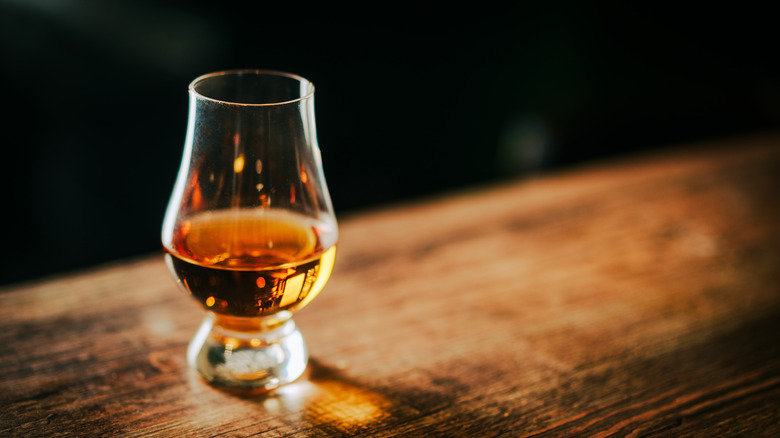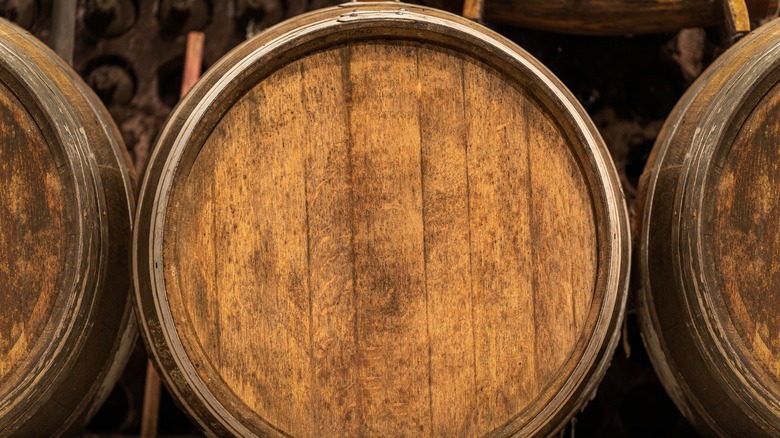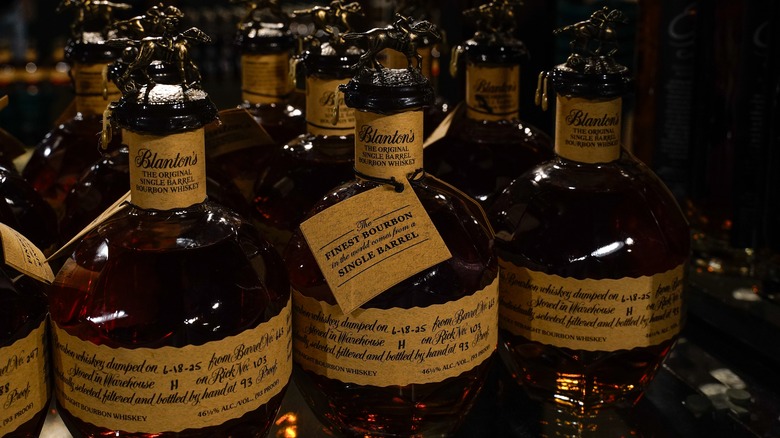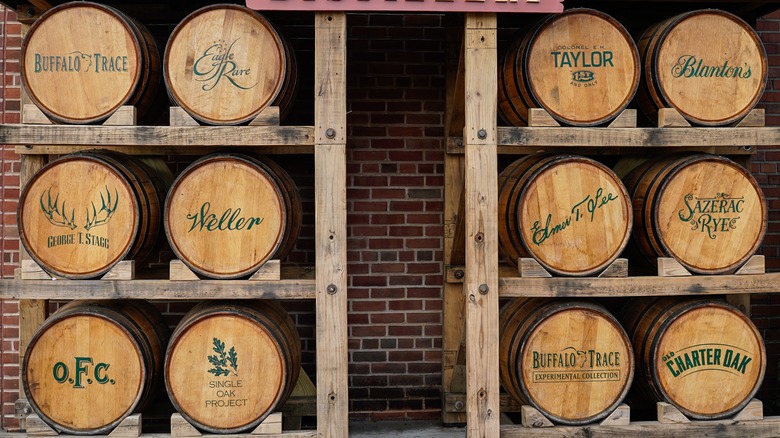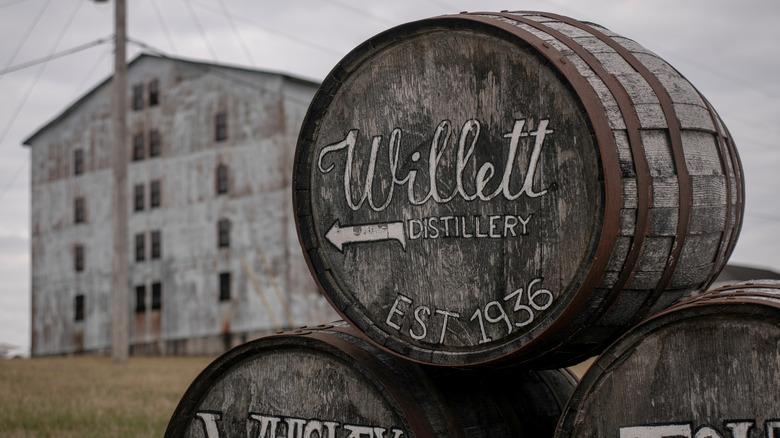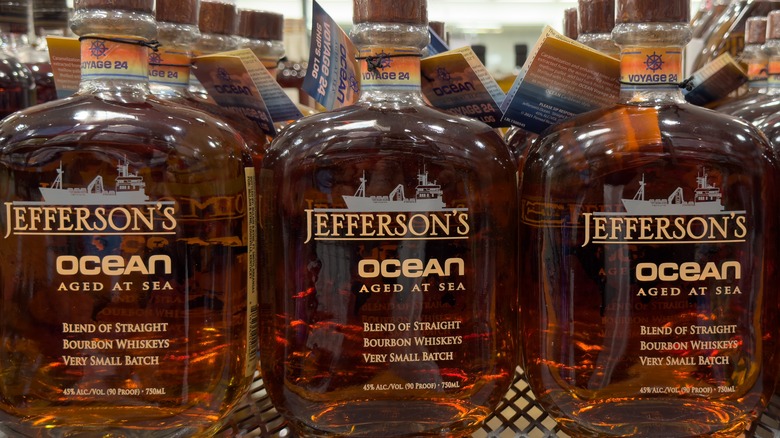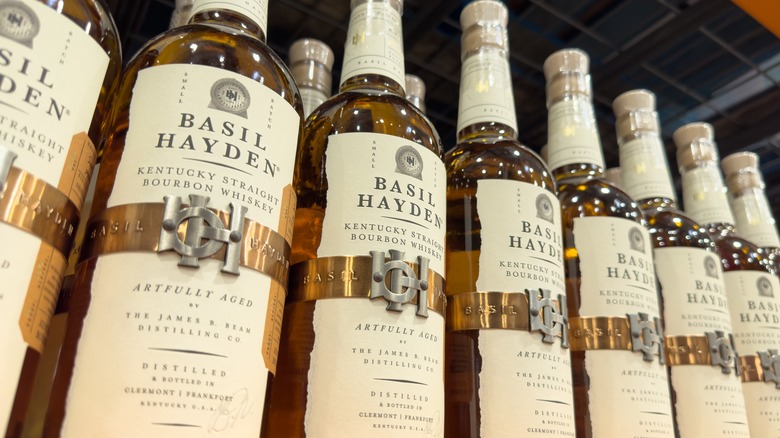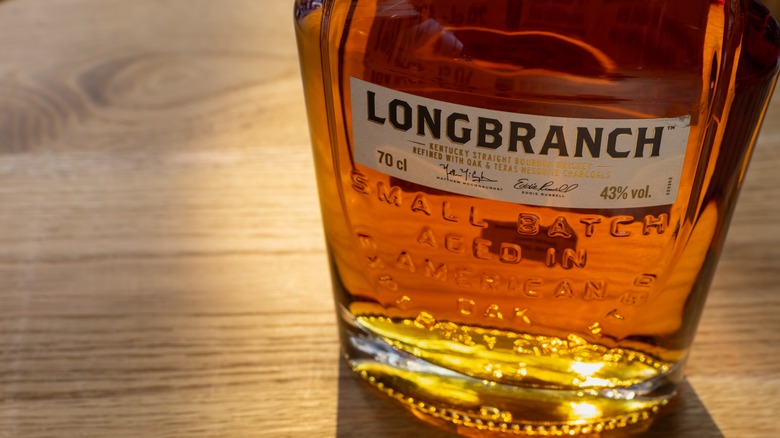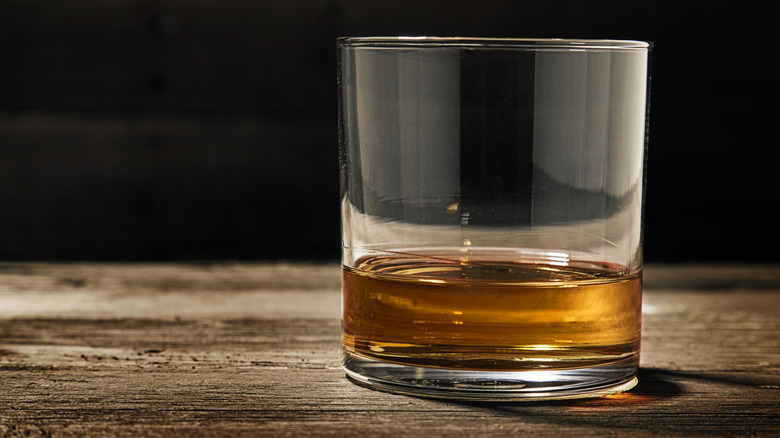These 9 Bourbons Aren't Worth The High Price Tag
Bourbon's name is steeped in legacy – from French royalty to Kentucky craftsmanship – a heritage that still captivates enthusiasts today. Yet many bottles now rely more on legend than quality, leaving that rich history behind. Celebrity-backed limited editions, sleek bottles with underwhelming juice, and artificially scarce releases have distorted what truly makes a bourbon worth your money. This trend is amplified as bourbon itself has become an asset class, valued more for investment than drinking pleasure.
So how can you discern quality from marketing? Look for transparency: age statements, honest details about craftsmanship, and proof that matches the price. When mystery and marketing take the lead, you're likely paying for little more than markup. The true worth of a bourbon lies not in prestige, packaging, or price, but in the depth of flavor and the satisfaction in every sip. As bourbon legend Jimmy Russell once told My Table magazine, "I can take you to a liquor store and show you a bottle they are selling for $20, a bottle they are selling for $40, and a bottle they are selling for $60. Probably the same product, just different labels."
Let these nine bottles that follow stand as a reminder: A famous name or a high price guarantees nothing. The most reliable rule is the simplest: Judge the whiskey by what's in the glass, not what's on the label. By learning to spot the difference between heritage and hype, every buyer, whether a casual drinker or a seasoned collector, can learn to sip smarter and spend wiser.
Pappy Van Winkle 23 Year
Pappy Van Winkle 23 Year is often described in reverent tones, but a closer look reveals a whiskey whose reputation has outpaced its taste. Extended aging imparts an intense oakiness that can overwhelm the finer notes of its wheated mash bill, creating a pour that is more woody than wondrous. While there's no denying the historical significance and craft of Pappy Van Winkle, the experience often falls short of the near-mythical status it holds, especially when you consider the overwhelming tannins and muted sweetness that come with such extreme age.
What truly defines Pappy today is less about flavor and more about scarcity and speculation. Market dynamics and collector demand have inflated its price into the realm of luxury investment — soaring from a manufacturer's suggested retail price (MSRP) of around $450 to over $5,000 on the open market — completely detaching from its origins as a thoughtfully crafted sipping bourbon.
For those seeking a similar profile without the extravagance, Old Weller Antique 107 offers a robust, high-proof alternative from the same distillery and the same coveted mash bill, delivering bold flavor and honest craftsmanship at a fraction of the cost. Sometimes, the best bourbon isn't the hardest to find.
Blanton's Original Single Barrel
There's no denying the allure of Blanton's Original Single Barrel bourbon — the sleek bottle, the collectible stopper, the John Wick cool factor. But once you look past the packaging, you'll find a solid, albeit unremarkable, high-rye bourbon that's been inflated by its own iconography.
Launched in 1984 as the world's first single-barrel bourbon, Blanton's was once a fairly priced, easy-sipping whiskey prized by insiders — but has since become a victim of its own success, often marked up to double or triple its $65 MSRP based on reputation alone. Even Johnny Walker Blue Label lost its footing on the secondary market in part due to Blanton's standing.
The issue isn't that Blanton's is bad; it's that it's no longer a fair value. At marked-up prices, you're paying for the horsey topper and silver-label swagger, not the juice inside. Instead, bottles like Russell's Reserve Single Barrel ($66 MSRP) deliver deeper complexity, richer flavor, and more proof — all without the frenzy. At that price, you can even afford to mix it into rye master Jimmy Russell's favorite bourbon sour without a hint of regret.
Weller 12 Year
While most bourbons use rye as their secondary grain (after corn), wheated bourbons substitute wheat, resulting in a softer, smoother, and often sweeter profile — think caramel, vanilla, and gentle baking spices instead of rye's sharp pepperiness. Weller 12 Year is a classic example of this style — a well-aged, approachable bourbon by Buffalo Trace Distillery that, at its intended $40–$50 price, represents outstanding value.
But here's the rub: Weller shares the same mash bill as the Pappy Van Winkle lineage, and this connection has fueled a frenzy of artificial scarcity and speculative pricing. What was once an honest, well-crafted sipper now commands significant markups — though recent data shows the secondary market bubble may be deflating, with prices falling nearly 24% in 2024 to an average of $146. While Weller 12 Year is still inflated, the downward trend suggests even collectors are questioning its premium.
For that price, you're still buying bragging rights, not a better bourbon. Skip the hunt and grab a bottle of Larceny Barrel Proof (around $60), which delivers a richer, more complex, and higher-proof wheated experience without the hype.
Calumut Farm Small Batch
Calumet Farm Small Batch commands a premium price (anywhere from $60 MSRP to $100 post-market), largely based on its polished presentation and a cleverly marketed blended age statement. Unlike a single age statement, which discloses the youngest whiskey in the bottle, a blended statement is an average. This means the bottle contains a mix of whiskeys of various ages, allowing distillers to blend older, more flavorful stock with younger, less expensive whiskey to hit a target cost and profile. In practice, this often results in a less complex spirit than a similarly priced bourbon with a single, honest age statement.
In this case, the result is a sourced bourbon from Barton Distillery that leans heavily on its trophy-style bottle and leather tag to justify the cost, while the juice inside is often thin and unremarkable. For the same price, or even less, a bottle like Knob Creek 9-Year Single Barrel ($59 MSRP) offers a transparent age statement, a higher proof, and a far more robust and flavorful bourbon experience from a distillery with nothing to hide. You're better off buying a known quantity than a calculated average.
Johnny Drum Private Stock
Johnny Drum carries a name with genuine historical weight: It's one of the early labels from the famed Willett Distillery, a family-owned Kentucky institution known for its iconic pot still bottles and coveted vintage releases. That legacy once stood for accessible, character-driven whiskey. But today's Johnny Drum Private Stock leans on that history rather than living up to it. The whiskey itself is thin, youthful, and inconsistent — flaws made more glaring by the removal of its former 15-year age statement, which once gave fans a reason to believe in the bottle.
Now priced well above its worth (more than double its $40 MSRP), you're paying for the Willett name and nostalgia, not the pour in your glass. For around the same price, Four Roses Single Barrel ($50 MSRP) offers a benchmark in balance and complexity, with a high-rye recipe that delivers rich layers of fruit, spice, and vanilla — all with the consistency that Johnny Drum promises but rarely provides.
Jefferson's Ocean
Jefferson's Ocean has built its brand on a captivating story: bourbon aged on a ship where it was exposed to ocean air and constant motion. While the concept is undeniably imaginative – involving 7-8 years of traditional aging followed by 5-10 months at sea — the results are far from transformative.
In practice, the ocean-aging process contributes little more than marketing mystique. The promised briny complexity is often imperceptible, and when detected, it can clash with the whiskey's core notes rather than complement them. Moreover, the extreme conditions at sea lead to noticeable batch inconsistency, turning each purchase into a sensory gamble.
The price tag ($80 MSRP) is especially difficult to justify when used in cocktails, where its subtle nuances vanish entirely. For less, you can opt for a proven powerhouse like Old Forester Prohibition Style 1920 ($60 MSRP), which offers a robust, high-proof experience rich with dark fruit, spice, and chocolate notes, all backed by Brown-Forman's unwavering quality.
Basil Hayden
Basil Hayden trades heavily on history — its name honors an 18th-century Catholic farmer and distiller who reportedly introduced high-rye recipes to Kentucky. That legacy is worthy of respect, but the modern whiskey bearing his name leans on this heritage rather than upholding it.
In today's expression, "smooth" is merely a euphemism for thin and simple; the light-bodied, 80-proof bourbon lacks the depth, richness, or spice that its high-rye mash bill should deliver. Word on the street is that no serious bourbon drinker takes this bottle seriously. At a $45 to $50 price point, you're largely paying for the minimalist bottle and the story, not the spirit inside.
For around the price, and sometimes much less, Old Grand-Dad Bottled in Bond ($40 MSRP) offers a far more authentic and flavorful taste of that same historical recipe, replete with the federally regulated bonded guarantee. Bottled at 100 proof, it's bold, spicy, and unapologetically robust — everything Basil Hayden isn't.
Wild Turkey Longbranch
There's a certain romanticism to the story of Longbranch, a collaboration between Wild Turkey and its creative director, award-winning actor Matthew McConaughey, evoking images of Texas woodfire and Kentucky craftsmanship. It's an easy sipper that's been charcoal-filtered for approachability. But that's precisely the problem: Ease comes at the cost of character.
The mesquite-and-oak filtration process and low proof (86) strip away the robust, signature spice of Wild Turkey's distillate, leaving a polished but simplistic bourbon that leans more on McConaughey's charm than on substance. Although the company touts an 8-year age statement, its absence from the bottle suggests flexibility for the future — hinting that the age, and potentially the profile, could change without warning.
At nearly $45 MSRP, you're funding a celebrity narrative, not a superior whiskey. For half the price, Wild Turkey 101 offers everything Longbranch lacks: bold flavor, higher proof, and the unfiltered, authentic character that made the brand legendary. It's a versatile powerhouse that shines neat, on the rocks, or in a classic cocktail like a Boulevardier. Ultimately, Longbranch offers a unique experience that fails to justify its premium cost when compared to its bolder, more authentic sibling.
Hudson Bright Lights, Big City
Hudson Whiskey, born from Tuthilltown Spirits in 2003, was an early pioneer of "speed aging," using tiny three-gallon barrels and even sonic agitation to mimic maturity in mere months. While innovative, this process prioritizes rapid oak extraction over depth, resulting in a spirit that often showcases raw, grainy notes instead of the complex chocolate and vanilla ones developed through slow, traditional aging.
Despite Tuthilltown Spirits being acquired by the spirits giant William Grant & Sons, the fundamental issue remains: The whiskey is still notably young and underwhelming. While the distillery has rightly switched to standard 53-gallon casks and reformulated its mash bill — signaling an intent to improve — the results in the bottle have yet to mature meaningfully. Even its stylish, apothecary-inspired packaging can't disguise the simple spirit within, which continues to fail in delivering the depth or complexity its $40 price tag demands.
For the same cost, New Riff Bottled in Bond offers everything Hudson promised but didn't deliver — a transparently aged (at least 4 years), non-chill filtered, 100-proof Kentucky bourbon made without shortcuts or flavoring. It's the proof that transparency and age matter, while Hudson is still banking on the same old shortcuts.

